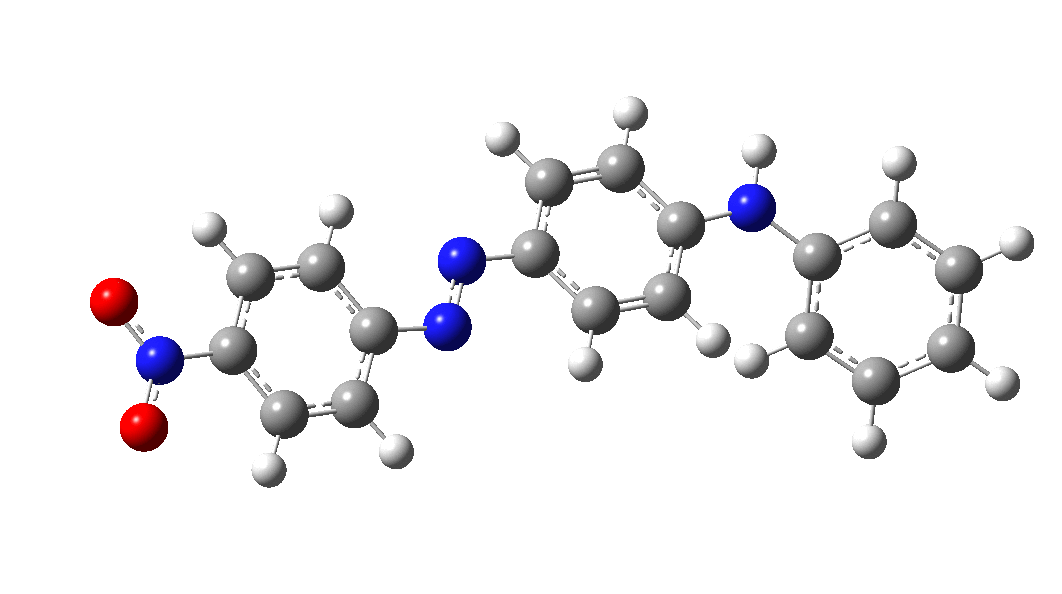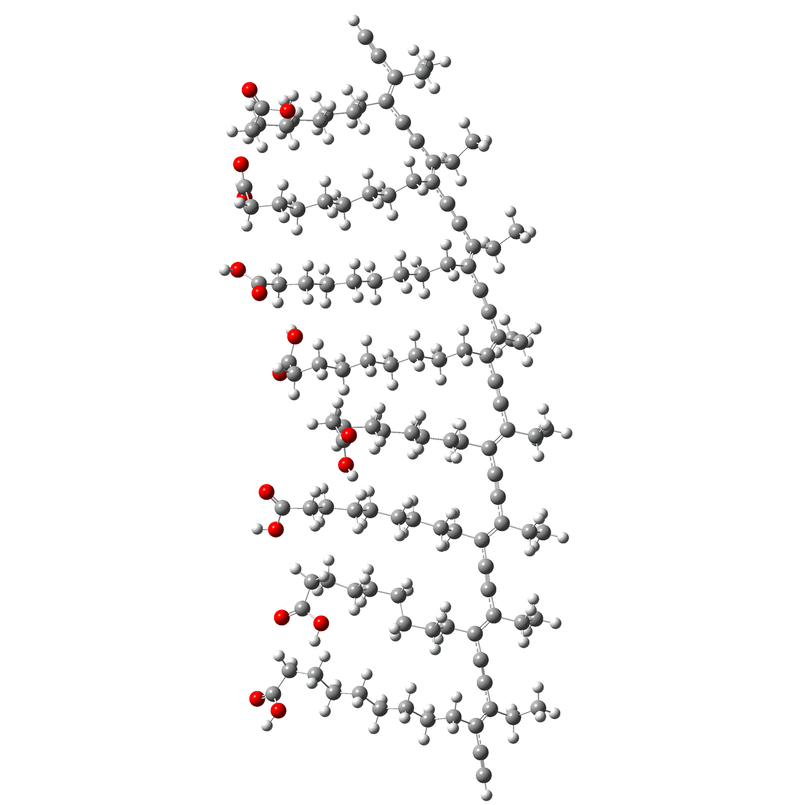
Research
양자 화학 계산 (Qunatum Chemical Calculation)
-
Various Application of Quantum Chemical Calculation
양자 화학 계산 기법을 이용하여 다양한 분자의 분자 구조, 분자의 에너지 레벨, HOMO와 LUMO, 분자의 진동 모드, IRC 등을 계산할 수 있다. 또한 계산 결과를 통해 실제로 일어나는 분자의 동력학을 예측할 수 있다.
-
Rate Constant of Electronic Transitions
유기반도체에 대한 양자화학 계산을 통해 단일항(ES)과 삼중항(ET)의 에너지 준위 및 스핀-궤도 결합 상수(SOC; spin-orbit coupling) 상수를 얻을 수 있으며, 더 나아가 Marcus 이론을 이용하여 단일항과 삼중항 사이의 계간전이(ISC; intersystem crossing)와 역계간전이(RISC; reverse intersystem crossing) 속도 상수를 계산할 수 있다.
Through quantum chemical calculations for organic semiconductors, it is possible to obtain the energy levels and spin-orbit coupling (SOC) constants of singlet (ES) and triplet (ET) states. Furthermore, utilizing Marcus theory, it is possible to calculate the rate constants for intersystem crossing (ISC) and reverse intersystem crossing (RISC) between the singlet and triplet states.
이러한 계산방식은 암치료에 활용되는 광감응제(PS: photosensitizer)의 계산에 활용될 수 있다. 광감응제는 단일항 상태에서 ISC를 통해 삼중항을 형성하고, 이 삼중항이 암세포를 파괴하는 활성산소를 만들어 낸다. 따라서 빠른 ISC를 통해 삼중항이 잘 형성되는 것이 중요하다. 이를 위해 삼중항과 단일항 사이의 에너지 차이(ΔEST)를 줄이기 위 전자주개(D)와 전자받개(A)를 결합한 D-A 형태의 광감응제를 사용한다. 다양한 D-A 구조의 광감응제에 대해서 계산을 통해 미리 ISC 속도상수를 예측하거나 암세포 사멸과정의 작동 메커니즘을 이해할 수 있다.
The calculation method described above can be applied to the calculation of photosensitizers used in cancer treatment. Photosensitizers form triplet states through ISC from their singlet states, and these triplet states generate reactive oxygen species that destroy cancer cells. Therefore, it is crucial to achieve rapid ISC to facilitate efficient formation of triplet states. To achieve this, photosensitizers of the D-A type, which combine electron donor (D) and electron acceptor (A) groups to minimize the energy difference (ΔEST) between singlet and triplet states, are utilized. Through calculations on various D-A structured photosensitizers, it is possible to predict the ISC rate constants in advance or gain a better understanding of the working mechanism of cell apoptosis during cancer treatment.
OLED에 사용되는 발광 물질인 열활성지연형광(TADF) 재료는 삼중항에서 단일항으로 전이된 후 발광프로세스(S1→S0)가 일어난다. 따라서 삼중항에서 빠른 RISC가 일어나는 것이 중요하다. 전자 전이가 일어나는 두 state의 natural transition orbital(NTO)의 종류가 다른 경우 El-Sayed 규칙에 따라 SOC가 커져서 RISC가 잘 일어날 수 있다. 따라서 양자 계산을 통해 NTO 및 속도상수를 계산함으로써 발광 프로세스를 분석 및 빠른 RISC를 갖는 고성능의 TADF 분자 설계에 활용될 수 있다.
The thermally activated delayed fluorescence (TADF) materials used in OLEDs undergo a transition from the triplet state to the singlet state, followed by the emission process (S1→S0). Therefore, it is important to achieve rapid reverse intersystem crossing (RISC) from the triplet state. If the natural transition orbital (NTO) types of the two states involved in the electronic transition are different, the spin-orbit coupling (SOC) increases according to the El-Sayed rule, enabling efficient RISC. Quantum calculations can be utilized to compute NTOs and rate constants, thereby facilitating the analysis of the emission process and the design of high-performance TADF molecules with fast RISC.
Reference:










